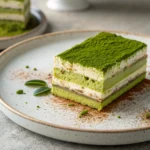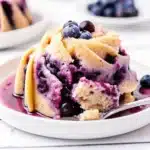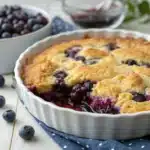Marshmallow frosting is a cloud-like, glossy icing that’s as enchanting as it is nostalgic. This sweet, fluffy topping has become a favorite among home bakers and professionals alike for its melt-in-the-mouth texture, smooth spreadability, and striking visual appeal. Whether you’re topping cupcakes, layering a cake, or torching it for a s’mores-style finish, marshmallow frosting adds that magical touch.
I’m Mary, known around Bath as “The Pudding Lady.” My journey with desserts began in my mother’s pantry, where I first tasted the wonders of marshmallow frosting fresh from the mixer. I wasn’t trained in a culinary school—I just baked, endlessly, joyfully. Over time, I turned that passion into a cozy pudding club held in my kitchen, where six guests gather each weekend to learn the art of classic British puddings—with a hint of whimsy.
From treacle-soaked sponges to Victoria cakes dripping with jam, I’ve seen it all—but nothing brings out smiles like a swirl of marshmallow frosting. In this article, I’ll walk you through everything you need to know about this beloved icing: what it is, how to make it, tips for perfect texture, how it compares to fluff or buttercream, and how to store it like a pro. Plus, I’ll answer your top questions about marshmallow frosting and share some delightful inspiration.
Table of Contents
What Is Marshmallow Frosting?
Understanding Marshmallow Frosting
Marshmallow frosting is a glossy, whipped topping made primarily from sugar, egg whites, and sometimes marshmallow fluff or gelatin. It’s celebrated for its glossy, cloud-soft look and irresistibly airy texture. Unlike traditional buttercreams, it’s fat-free and much lighter, making it an excellent option for those looking for something less dense but still indulgent.
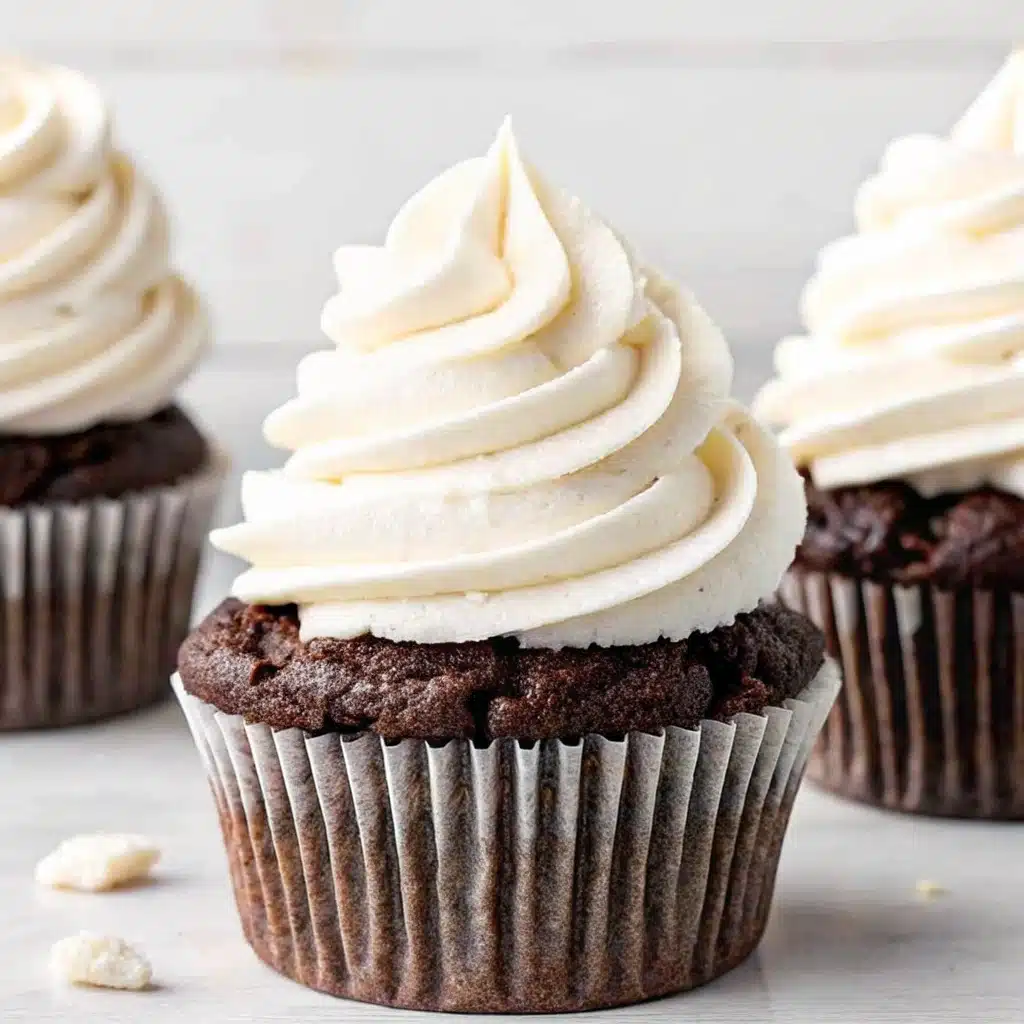
Also known as 7-minute frosting or boiled icing, marshmallow frosting gets its structure from whipping hot sugar syrup into beaten egg whites until stiff peaks form. The result? A frosting that’s as stable as it is beautiful, with a subtle vanilla flavor and incredible spreadability.
History and Popularity in Baking
While buttercream and ganache have long dominated the frosting world, marshmallow frosting has gained traction for its unique appearance and flavor profile. Its roots lie in vintage American baking, particularly during the mid-20th century when home cooks were seeking lighter alternatives to butter-based frostings.
In recent years, marshmallow frosting has become a staple in modern bakeries, especially for s’mores-inspired desserts, campfire-themed cupcakes, and elegant wedding cakes. It photographs beautifully and holds its shape, making it a go-to choice for decorators.
Don’t miss our creamy Flourless Chocolate Cake (Vegan) that pairs well with marshmallow topping.
Print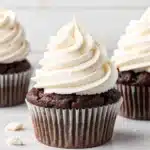
Marshmallow Frosting
- Total Time: 20 minutes
- Yield: Enough for 12 cupcakes 1x
Description
Light, fluffy, and sweet, this marshmallow frosting is perfect for topping cupcakes, cakes, and s’mores-inspired treats.
Ingredients
- 4 large egg whites
- 1 cup granulated sugar
- 1/4 teaspoon cream of tartar
- 1 teaspoon vanilla extract
Instructions
- In a heatproof bowl, combine egg whites, sugar, and cream of tartar.
- Place bowl over a pot of simmering water, whisking constantly until sugar is dissolved and mixture is warm (about 160°F).
- Transfer mixture to a stand mixer and beat on high speed until stiff, glossy peaks form (about 7–10 minutes).
- Add vanilla extract and beat for 1 more minute until fully incorporated.
- Use immediately to frost cakes or cupcakes. Can be lightly toasted with a kitchen torch for extra flavor.
Notes
Frosting is best used fresh. Store leftovers in an airtight container at room temperature for up to 1 day.
- Prep Time: 10 minutes
- Cook Time: 10 minutes
- Category: Frosting
- Method: Whipping
- Cuisine: American
Nutrition
- Serving Size: 2 tablespoons
- Calories: 50
- Sugar: 10g
- Sodium: 10mg
- Fat: 0g
- Saturated Fat: 0g
- Unsaturated Fat: 0g
- Trans Fat: 0g
- Carbohydrates: 11g
- Fiber: 0g
- Protein: 1g
- Cholesterol: 0mg
Ingredients
Core Ingredients Explained
The magic of marshmallow frosting lies in its simplicity. While it looks fancy, the ingredient list is surprisingly short and straightforward. Here are the essentials you’ll need to whip up a perfect batch:
| Ingredient | Purpose |
|---|---|
| Egg Whites | Provide structure and volume; the base of the meringue. |
| Granulated Sugar | Adds sweetness and stabilizes the foam. |
| Cream of Tartar | Helps stabilize the egg whites and enhances peak strength. |
| Water | Dissolves sugar to create a syrup. |
| Vanilla Extract | Adds classic marshmallow flavor. |
| Salt (optional) | Balances sweetness and deepens flavor. |
This combination is responsible for the glossy finish, airy texture, and marshmallowy flavor we all love. When perfected, it turns velvety smooth, effortlessly scoopable, and pipes with flawless ease.
Some recipes include light corn syrup or gelatin for added stability, especially if the frosting will be sitting out for longer periods or exposed to heat (like under lights or sun during an outdoor event).
Check out our guide to Russian Buttercream for creamy, fluffy options beyond traditional frostings.
Comparing Homemade vs. Store-Bought Marshmallow Fluff
If you’re short on time or hesitant about handling egg whites, you might wonder: Can I use marshmallow fluff instead? The answer is yes—but with some caveats.
Homemade marshmallow frosting has a fresher taste and customizable texture. You can adjust the sweetness, stability, and flavor level. It’s also free of preservatives and artificial flavorings.
| Feature | Homemade | Store-Bought Marshmallow Fluff |
|---|---|---|
| Flavor | Fresh, rich vanilla | Sweet, processed |
| Texture | Light, airy, glossy | Sticky, thick |
| Stability | More stable when piped | Can collapse in warm temperatures |
| Customization | High | Limited |
| Shelf Life | Shorter (needs refrigeration) | Longer (room temp) |
Using fluff from a jar can work in a pinch, especially for quick cupcake topping or dipping. But for those wow-factor wedding cakes or Instagram-worthy swirls, homemade still wins.
Don’t miss our Vegan Chocolate Mousse Cake for more light and airy frosting inspiration.
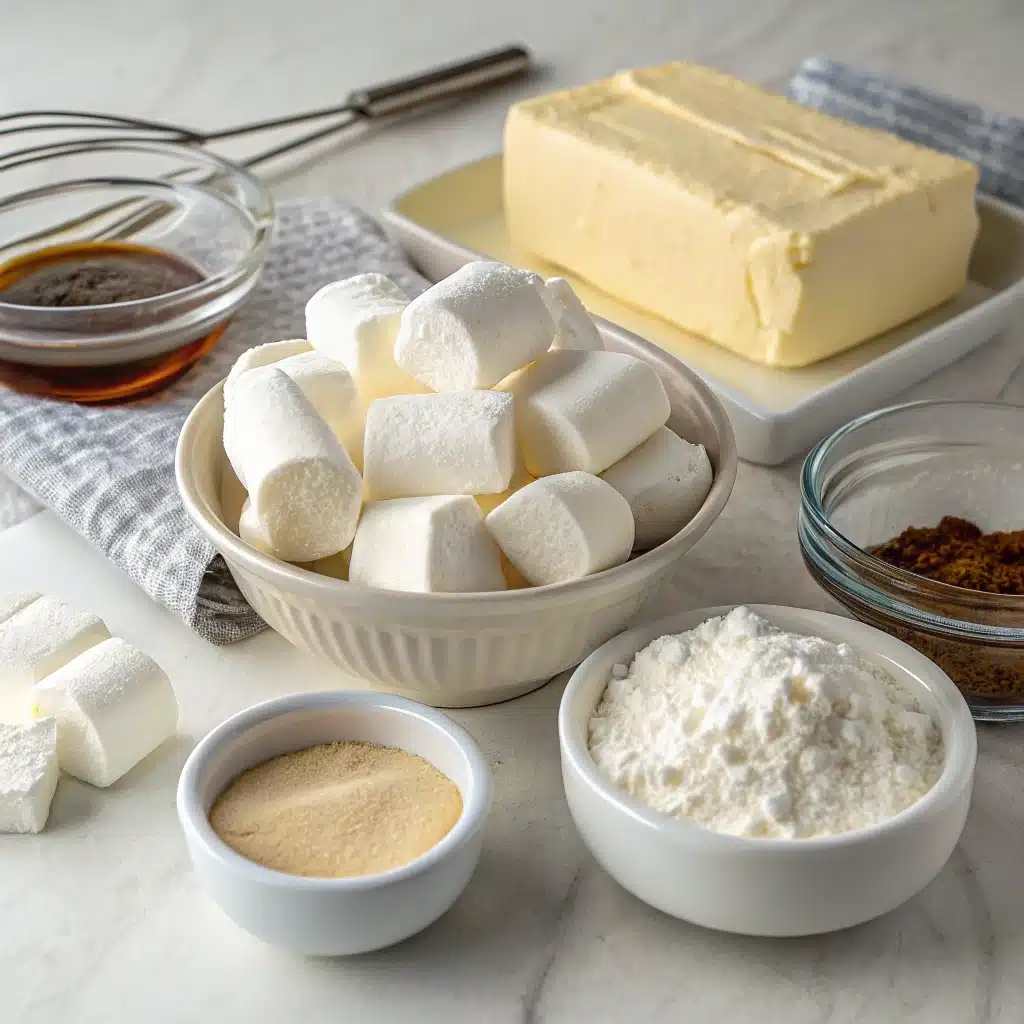
How to Make Marshmallow Frosting at Home
Classic Homemade Marshmallow Frosting Recipe
If you’re ready to take your baking game up a notch, learning how to make marshmallow frosting from scratch is a game-changer. This foolproof recipe delivers a fluffy, glossy topping perfect for cakes, cupcakes, and even cookies.
Ingredients:
- 4 large egg whites (room temperature)
- 1 cup granulated sugar
- ¼ teaspoon cream of tartar
- 1 teaspoon pure vanilla extract
- Pinch of salt
- ¼ cup water
Instructions:
- Set up a double boiler: In a heatproof bowl—ideally glass or metal—mix together the egg whites, sugar, cream of tartar, salt, and water.
- Heat and whisk: Place the bowl over a pot of simmering water (don’t let the bottom touch the water). Whisk constantly until sugar dissolves completely and the mixture reaches 160°F (about 4–5 minutes).
- Beat to stiff peaks: Transfer the mixture to a stand mixer or use a hand mixer. Beat on high speed for 6–8 minutes until stiff, glossy peaks form.
- Add vanilla: Beat in vanilla extract and mix just until incorporated.
- Use immediately: This frosting is best used fresh for piping, swirling, or spreading.
Looking for inspiration? Try topping these Vegan and Gluten-Free Cupcakes with marshmallow frosting for a totally dairy-free treat.
Tips for Perfect Consistency and Texture
Getting the texture right can make or break your marshmallow frosting. Follow these tips for consistently stellar results:
- Clean Bowl & Whisk: Any trace of oil or fat can ruin your egg whites. Make sure everything is squeaky clean.
- Use Fresh Eggs: Older egg whites don’t whip as well as fresh ones.
- Room Temperature Matters: Let egg whites sit out for 30 minutes before beating. This helps them whip faster and higher.
- Don’t Overbeat: As soon as stiff peaks form, halt the mixing immediately! Overbeating can lead to grainy, separated frosting.
- Use Immediately: While it can hold for a short time, marshmallow frosting is best when freshly made.
Marshmallow frosting can be piped into elegant swirls or spread with a spatula for that casual, rustic look. For a toasted marshmallow finish, give it a gentle pass with a kitchen torch.
Don’t miss our Smores Brownies that incorporate melted marshmallows for a dessert with extra flair.
Can You Melt Marshmallows for Icing?
Melting Marshmallows: Method and Safety
A question we get a lot is: “Can I melt marshmallows for icing?” The short answer is yes—but it’s a bit trickier than simply zapping them in the microwave and spreading them on a cake.
Melted marshmallows can act as the base for a makeshift frosting, especially if you’re in a pinch and don’t want to whip egg whites or make a sugar syrup. Here’s how to do it safely and effectively:
Basic Melted Marshmallow Icing Recipe:
- 2 cups mini marshmallows
- 1–2 tablespoons milk or cream
- ½ teaspoon vanilla extract
Steps:
- Add marshmallows and milk to a heatproof bowl.
- Microwave in 20–30 second intervals, stirring frequently until melted and smooth.
- Stir in vanilla.
- Use immediately for spreading or drizzling.
Safety Tips:
- Always use a microwave-safe bowl.
- Melt in short bursts to prevent burning or overheating.
- Stir frequently to evenly distribute heat and avoid scorching.
This version isn’t as stable as true marshmallow frosting, but it works well as a sticky glaze or a drippy cupcake topping. It’s best for desserts that will be eaten quickly, as it can lose texture over time.
Pros and Cons of Using Melted Marshmallows
If you’re weighing whether to melt marshmallows or make a traditional frosting, here’s a quick comparison to help you decide:
| Criteria | Melted Marshmallows | Traditional Marshmallow Frosting |
|---|---|---|
| Ease | Very quick and simple | Requires mixer and heat |
| Flavor | Sweeter, slightly artificial | Mellow, natural vanilla |
| Texture | Gooey and stretchy | Light, fluffy, and stable |
| Best For | Glazes, drips, quick desserts | Piping, decorating, layering |
| Shelf Life | Short (starts to set quickly) | Holds shape for hours |
So, while melting marshmallows for icing is doable, it’s not a full substitute for a properly whipped marshmallow frosting if you’re looking for decorative detail or longevity.
Will Marshmallow Frosting Harden?
Why It Sets the Way It Does
One of the biggest concerns bakers have is whether or not marshmallow frosting will harden—and the answer depends on how it’s made and stored.
Unlike buttercream, marshmallow frosting doesn’t harden completely into a crust. Instead, it forms a light skin or film on the outside while staying soft and sticky on the inside. This is because of its main components—egg whites and sugar syrup—which form a stabilized meringue. Once piped or spread, it holds its shape well but doesn’t develop the same firm set as royal icing or fondant.
If left exposed to air for long periods, especially in a dry environment, it will dry out faster. But refrigerated or stored properly, it remains fluffy for 24–48 hours without issue.
Key factors that affect hardening:
- Humidity: High humidity keeps it soft; low humidity dries it faster.
- Recipe Type: Fluff-based frostings tend to soften over time; cooked sugar syrup-based versions are more stable.
- Storage: Airtight storage prevents drying and cracking.
Techniques to Keep It Soft and Fluffy
If you’re frosting cupcakes ahead of time or want to maintain that just-whipped texture, here are tips to ensure marshmallow frosting doesn’t harden too much:
- Apply Immediately: Use the frosting as soon as it’s whipped. Waiting too long can cause it to lose volume.
- Cover Finished Desserts: Protect the frosting from air exposure by storing it in a cake dome or a tightly sealed container.
- Avoid Refrigeration When Possible: Fridges dry out meringue-style frostings. Keep at room temperature for up to 24 hours instead.
- Add Corn Syrup or Gelatin: A touch of corn syrup or a sprinkle of gelatin can help retain softness and increase shelf life.
- Toast It! If you torch the surface, the light crust helps seal in moisture without turning the frosting hard.
So no, marshmallow frosting won’t harden into a crusty mess, but if stored poorly, it can become tacky or collapse. Treat it with care, and it’ll stay as beautiful as when first piped.
Discover great ideas like this Vegan and Gluten-Free Cupcake recipe for topping ideas that work wonderfully with marshmallow-based frostings.
Marshmallow Fluff as a Frosting Substitute
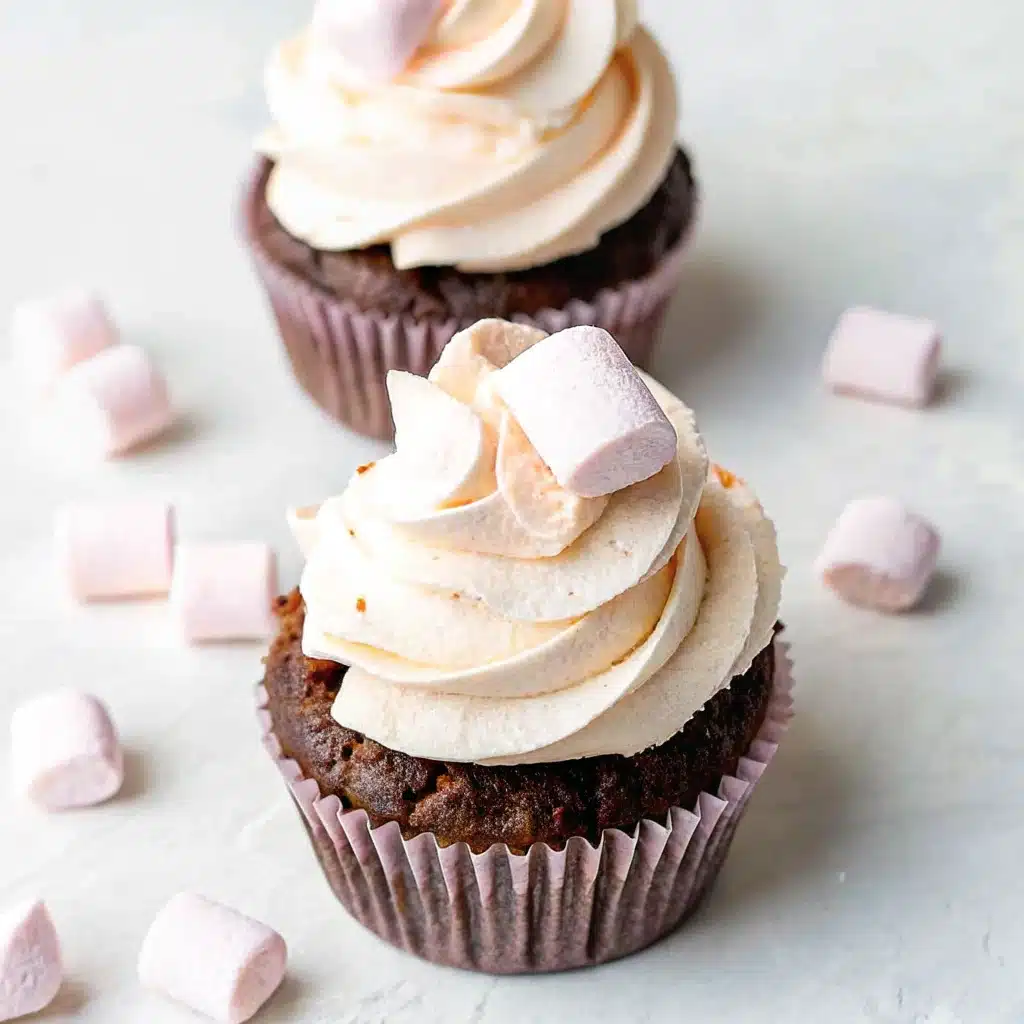
Can Marshmallow Fluff Be Used as Frosting?
Absolutely! Marshmallow fluff is one of the easiest shortcuts to getting that sweet, sticky finish without making frosting from scratch. If you’re low on time or don’t want to handle egg whites and sugar syrups, fluff is a solid alternative.
But here’s the catch—while fluff is similar in flavor to marshmallow frosting, it doesn’t offer the same texture or stability for decorating. Straight from the jar, it’s thick and gooey, more like a filling than a pipable frosting.
Here’s how to upgrade it into something more frosting-like:
Quick Marshmallow Fluff Frosting Recipe:
- 1 cup marshmallow fluff
- ½ cup unsalted butter, softened
- 1 cup powdered sugar
- 1 teaspoon vanilla extract
Directions:
- Beat the butter until light and fluffy.
- Add marshmallow fluff and mix until smooth.
- Slowly beat in powdered sugar.
- Finish with vanilla extract and beat until fluffy.
This gives you a richer texture and more spreadable consistency that can be piped or layered.
Best Practices When Using Marshmallow Fluff
While marshmallow fluff is versatile, there are a few things to keep in mind if you’re planning to use it on cakes or cupcakes:
✅ Great Uses:
- Filling between cake layers
- Swirl on top of cupcakes (especially when toasted)
- Dollop on cookies, brownies, or s’mores
⚠️ Avoid for:
- Intricate piping work (too soft)
- Long events (melts in heat)
- Outdoor display tables without refrigeration
| Marshmallow Fluff Feature | Performance |
|---|---|
| Flavor | Classic, sweet marshmallow |
| Texture | Gooey, sticky |
| Stability | Low (softens quickly) |
| Best For | Casual, rustic desserts |
For a quick win, just warm it slightly and swirl on top of cupcakes using a spoon or spatula. Finish it off with a kitchen torch for a toasted finish—it’ll look artisan without any piping tips.
Looking for more ideas? Don’t miss our fluffy Russian Buttercream alternative if you prefer a smoother, richer mouthfeel.
What Is Marshmallow Buttercream?
How Marshmallow Buttercream Differs from Regular Frosting
Marshmallow buttercream is the delicious hybrid between the richness of classic buttercream and the fluffiness of marshmallow frosting. It’s smooth, sweet, slightly airy, and holds its shape exceptionally well. The biggest difference? It’s made with marshmallow fluff blended into a traditional buttercream base.
So if you love the taste of marshmallows but want the stability and structure of buttercream, this is your perfect match.
Here’s how it stacks up against other frostings:
| Type | Texture | Stability | Sweetness | Ideal Use |
|---|---|---|---|---|
| Marshmallow Buttercream | Fluffy & rich | High | Medium-High | Layer cakes, piping, swirls |
| Marshmallow Frosting | Light & airy | Moderate | High | Cupcakes, s’mores cakes |
| Classic Buttercream | Dense & creamy | High | Medium | All-purpose |
| Whipped Cream Frosting | Light & soft | Low | Light | Chilled desserts only |
Unlike marshmallow frosting (which is typically fat-free), marshmallow buttercream includes butter, making it richer and more suited for high-detail piping and sculpting. Create flowers, borders, or tall swirls that surprisingly hold their shape even in warm conditions.
When and Why to Choose Marshmallow Buttercream
You should choose marshmallow buttercream when:
- You need a stable frosting that pipes well and holds its shape on cakes or cupcakes.
- You want the flavor of marshmallow but need more durability than fluff alone.
- You’re decorating a cake for an event that lasts several hours.
- You’re pairing with strong cake flavors like chocolate, peanut butter, or spice cakes.
How to Make It (Quick Overview):
Ingredients:
- 1 cup unsalted butter, room temperature
- 1 jar (7 oz) marshmallow fluff
- 1½ cups powdered sugar
- 1 tsp vanilla extract
- Pinch of salt
Instructions:
- Beat butter until fluffy.
- Mix in marshmallow fluff until smooth.
- Add powdered sugar, vanilla, and salt. Beat until fluffy and pipeable.
Use this buttercream to decorate a layered chocolate cake or fill cupcakes for a soft, sweet center that complements any flavor.
Don’t miss our Chocolate and Pistachio Cake—a perfect match for marshmallow buttercream’s subtle sweetness.
Best Cakes and Desserts to Pair With Marshmallow Frosting
Top Cakes that Go Well with Marshmallow Frosting
Marshmallow frosting isn’t just beautiful—it’s incredibly versatile. Whether you’re looking for a topping for rich chocolate cake or a light vanilla sponge, its airy sweetness enhances a wide range of flavors.
Here are the top cake pairings:
| Cake Flavor | Why It Works with Marshmallow Frosting |
|---|---|
| Chocolate Cake | Balances the richness with a light, fluffy finish |
| Vanilla Cake | Allows the marshmallow flavor to shine |
| Red Velvet Cake | Offers contrast in color and texture |
| Lemon Cake | Bright, tart flavor cuts the sweetness |
| Carrot Cake | Adds lightness to a dense, spice-filled base |
| Banana Cake | Complements creamy, mellow banana notes |
| Peanut Butter Cake | Echoes a “fluffernutter” flavor profile |
Looking for inspiration? Try this indulgent Chocolate and Pistachio Cake with marshmallow frosting for an elevated twist on a classic combination.
For even more depth, torch the frosting lightly to create a toasted, caramelized top that mimics campfire s’mores. It adds visual drama and a rich smoky layer of flavor.
Creative Dessert Applications (Cupcakes, Cookies, etc.)
Marshmallow frosting doesn’t stop at cake. It’s a showstopper on all kinds of desserts, especially where texture contrast is key.
Great Pairings:
- Cupcakes: Pipe lofty swirls and lightly torch them for a bold, eye-catching finish.
- Cookies: Use as a filling between two soft cookies.
- Brownies: Spread a thick layer on top and toast gently.
- Layer Bars: Add as a topping to lemon or graham bars.
- Tarts: Swirl over chocolate or caramel tart bases.
- Mini Pies: Replace traditional meringue on lemon or key lime pies.
Don’t miss our gooey Smores Brownies—a perfect example of how marshmallow frosting can elevate even the humblest dessert.
When you need a dessert topping that’s airy, sweet, and photo-ready, marshmallow frosting is the answer. Its versatility lets you transform everyday treats into bakery-worthy masterpieces.
Decorating Tips Using Marshmallow Frosting
How to Pipe Marshmallow Frosting
Piping with marshmallow frosting is easier than you might think—but it does take some technique. Since it’s fluffier and lighter than buttercream, you’ll need the right tools and approach to get professional-looking results.
Pro Tips for Piping:
- Use a large piping tip, like an open star (1M) or round (2A). Smaller tips clog easily with airy textures.
- Fill the piping bag no more than ⅔ full. The frosting is delicate and can deflate with too much pressure.
- Apply even pressure and go slow. Marshmallow frosting tends to spread more than buttercream.
- Keep the bag angled for control, and start from the center for clean spirals.
- Torch it lightly after piping for a toasted finish—it stiffens the frosting just enough to hold the shape.
This frosting is ideal for cupcakes, mini cakes, and even cookies with decorative swirls. For best results, frost right before serving or store frosted desserts in an airtight container to preserve shape and shine.
Marshmallow Frosting for Layered Cakes and Fillings
Because marshmallow frosting is light and fluffy, it makes an excellent filling between cake layers—especially when you want to avoid overly heavy buttercream.
Tips for Layered Use:
- Pipe a buttercream “dam” around each layer before adding the marshmallow frosting to keep it from sliding.
- Refrigerate between layers to firm up the frosting and keep the cake structurally stable.
- Use a serrated knife and a gentle sawing motion when slicing layered cakes with marshmallow filling to avoid dragging.
It also works beautifully as a crumb coat or finishing layer, especially when topped with shredded coconut, crushed graham crackers, or sprinkles for added texture.
This decorating-friendly frosting is what makes desserts like our Vanilla Cake with Raspberry Filling truly stand out at any event.
Conclusion
Whether you’re topping off a decadent chocolate cake, creating toasted swirls on cupcakes, or crafting a dreamy layered dessert, marshmallow frosting brings a magical combination of texture, flavor, and visual appeal. It’s airy yet stable, sweet without being overpowering, and incredibly versatile.
From understanding how to melt marshmallows for icing to mastering the differences between fluff and buttercream, you’ve now got the knowledge—and the inspiration—to elevate your baking game. So grab those egg whites or that jar of fluff and start swirling. Your cakes will thank you.
Check out our elegant Tiramisu Cake for another dessert that could easily wear a crown of marshmallow frosting.
Fore more recipes follow me in Facebook, medium and Pinterest
FAQs
Can I melt marshmallows for icing?
Yes, you can melt marshmallows to create a quick icing. Simply heat them with a splash of milk until smooth, and spread while warm. However, this version is more of a glaze or drizzle—it won’t have the stability or fluffiness of traditional marshmallow frosting. For a fuller frosting, it’s better to use melted marshmallows as part of a larger whipped mixture or incorporate marshmallow fluff.
Will marshmallow frosting harden?
Marshmallow frosting doesn’t fully harden like royal icing. It will form a thin, light crust on the outside while remaining soft and fluffy inside. The outer layer may become slightly tacky if left uncovered, but overall, it stays pillowy. Storing it in an airtight container at room temperature helps maintain texture.
Can marshmallow fluff be used as frosting?
Yes, marshmallow fluff can be used as frosting, especially for simple desserts or cupcakes. While it’s not as stable for piping, it can be whipped with butter and powdered sugar to create a fluffier, richer frosting. It’s a great shortcut when you don’t have time to make marshmallow frosting from scratch.

